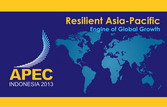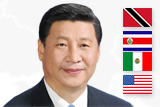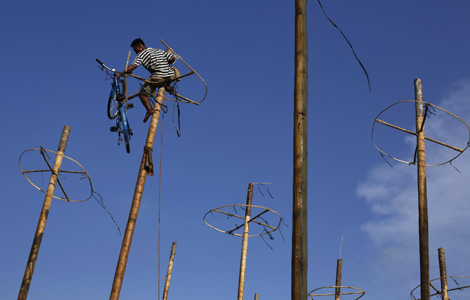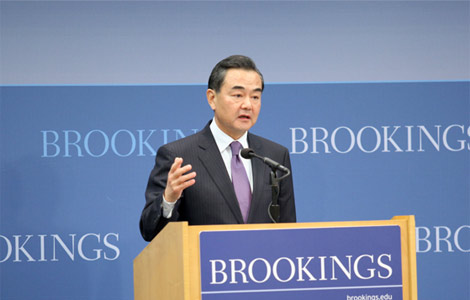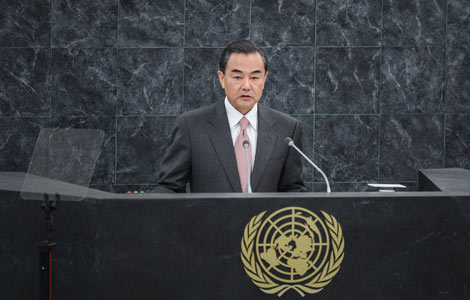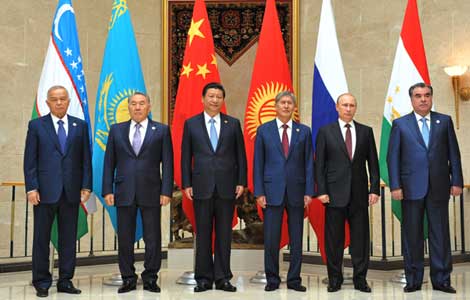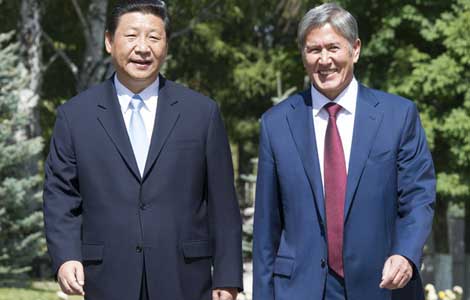Basic facts about Indonesia
By ( Xinhua )
Updated: 2013-10-02
BEIJING - President Xi Jinping left Beijing on Wednesday morning for state visits to Indonesia, Malaysia, and the 21st leaders' meeting of the Asia-Pacific Economic Cooperation (APEC).
The following are some key facts about Indonesia:
The Republic of Indonesia is located in Southeast Asia near the equator, comprising 17,508 islands with a total land area of 1.9 million square km. It is the largest archipelagic nation as well as the fourth most populous country in the world with a population of more than 238 million in 2010. Its capital is Jakarta.
Indonesia is a multinational country composed of more than 100 ethnic groups. Javanese account for 45 percent of the population, and Sundanese 14 percent. The country's official language is Indonesian, but also spoken are more than 200 minority languages. It has the world's largest number of Muslims which make up 87 percent of the country's population.
Indonesia has abundant natural resources, including crude oil, natural gas, coal, tin, bauxite, nickel, copper, gold, and silver. It is the largest economy in Southeast Asia, with cash crop growing, export-oriented manufacturing and service industries as the pillar of its economy. The country is world's second largest producer of palm oil, rubber, and pepper. In recent years, its manufacturing has registered a faster growth than its national economy as a whole.
Tourism ranks the second among all non-oil and gas foreign exchange earners. The Indonesian government has given high priority to developing tourist attractions, building hotels, training practitioners and simplifying border entry procedures.
Indonesia has pursued an independent and non-aligned foreign policy. It is a founding member of the Association of Southeast Asian Nations (ASEAN), and has regarded ASEAN as a cornerstone in implementing its foreign policy.
The country is committed to practical regional cooperation while maintaining balanced ties with great powers, such as the United States, China, Japan, Australia, and the European Union. It seeks their political support and economic aid, while laying emphasis on the Non-Aligned Movement and South-South cooperation.
Indonesia and China established diplomatic ties on April 13, 1950. The ties were broken off on October 30, 1967 and then restored on August 8, 1990. Since then the two countries have experienced rapid development of bilateral ties.
In 2005, China and Indonesia signed a joint declaration, which designated their relations as "strategic partners," pushing their bilateral ties to a new stage of all-round development.
With bilateral trade reaching $66.22 billion last year, China has become Indonesia's second biggest trading partner. Bilateral trade in the first half of 2013 hit 33.84 billion dollars, up 4.6 percent from the same period of last year.
Schedule
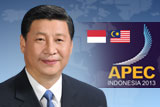
President Xi to visit Indonesia, Malaysia, attend APEC summit
Oct 2 to 3: Pay State Visit to Indonesia
Oct 4 to 5: Pay State Visit to Malaysia
Oct 6 to 8: Attend the 21st economic leaders' meeting of APEC forum and meet with global leaders in Bali, Indonesia
Forum
ASEAN members take lead from Indonesia being the largest of them all in many ways. China's relationship with it must get better.
China needs to boost ties with ASEAN
China should prioritize her relationship with all the ASEAN members for peace, stability and prosperity.

